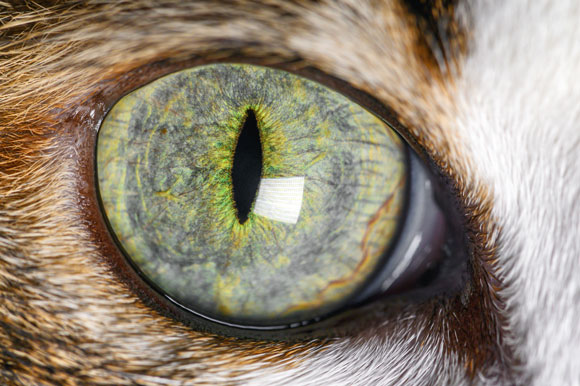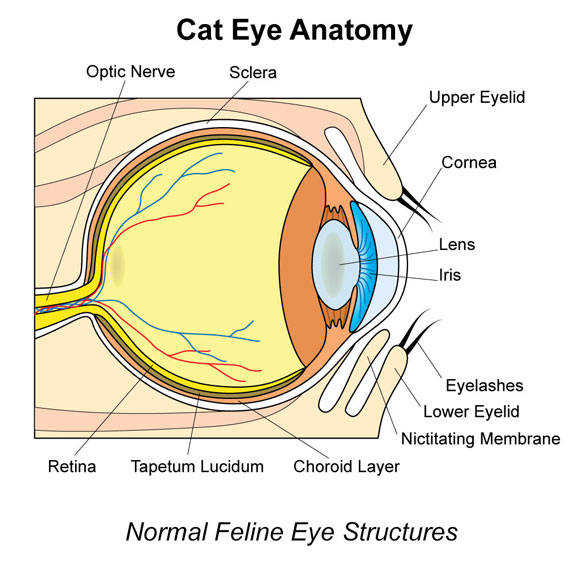Uveitis in Cats

Uveitis is a painful eye condition in cats that can be serious and result in loss of sight. Read on to learn more about it, including what to watch out for.
What Is Uveitis in Cats?
The uvea is the part of a cat's eye that includes the iris, the ciliary body, and the choroid. Uveitis is one when or more of those structures is experiencing inflammation.
- The ciliary body makes the fluid that nourishes and lubricates the structures of the eye
- The iris is the colorful part of the eye, and it controls the lens
- The choroid is the middle of the eye's three layers

One or more of these structures may be affected when uveitis is present. It may affect one or both eyes.
What Causes Feline Uveitis?
There are many, many conditions and occurrences that can cause uveitis in cats. Some of the most common ones include:
- Infections, the most common being FIV, FeLV, FIP, and toxoplasmosis
- Metabolic diseases like diabetes mellitus
- Immune-mediated conditions
- Eye cancer
- Injury to the eye
- Chemicals getting in the eye
- High blood pressure
Signs of Uveitis in Cats
Some of the signs of uveitis in cats can be the same as other eye conditions, like glaucoma or corneal ulcer. It's important to have a veterinarian examine your cat's eye right away if any of these signs are present:
- Pawing or rubbing at the eye
- Squinting
- Trying to get away when someone approaches the head/face
- Rapid blinking
-
Light sensitivity
- Red in the whites of the eye
- Difficulty seeing
- Cloudiness to the eye
Diagnosing Uveitis in Cats
Your veterinarian will take a thorough history from you of what you're seeing at home and when. The doctor will then perform a complete physical exam including an eye exam. The IOP, or intraocular pressure, of the eye will be evaluated. In uveitis, that pressure is low.
When your veterinarian diagnosis uveitis, he or she may also recommend other tests to look for the underlying cause, such as blood pressure check, blood work, urinalysis, and x-ray.
What Is the Treatment for Uveitis in Cats?
Treatment of uveitis is aimed at decreasing the pain and inflammation in the eye. That may include the use of some of the following:
- Steroid-containing eye drops
- Non-steroidal eye drops
- Anti-bacterial drops
- Oral medications for pain, infection, or other conditions as they are diagnosed
- Surgery to repair trauma-related injuries
- Other treatments for the underlying condition
Glaucoma, which involved increased IOP that can quickly lead to blindness, is a common secondary condition to uveitis, so treating uveitis is important to try and avoid that.
Learn more about other eye problems here: "Eye Problems in Cats: An Overview."
You May Also Like These Articles:
Eye Infections in Young Kittens
Notice: Ask-a-Vet is an affiliated service for those who wish to speak with a veterinary professional about their pet's specific condition. Initially, a bot will ask questions to determine the general nature of your concern. Then, you will be transferred to a human. There is a charge for the service if you choose to connect to a veterinarian. Ask-a-Vet is not manned by the staff or owners of CatHealth.com, and the advice given should not delay or replace a visit to your veterinarian.





